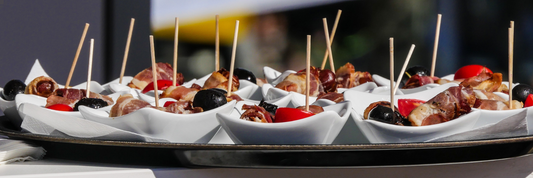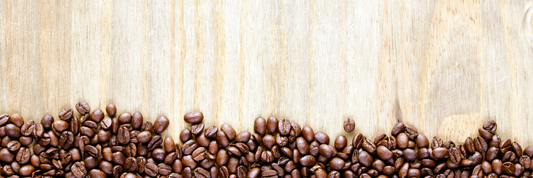When it comes to beer, the bottle’s size and shape play a significant role in everything from branding to storage and customer experience. Different beer bottle dimensions are designed for various types of beer, usage scenarios, and even regional preferences. For breweries and retailers, understanding these dimensions is crucial not only for creating the right impression but also for ensuring the practicality and functionality of their packaging. This article will explore the most popular beer bottle sizes, types, and the factors that make certain dimensions preferable for particular beers and markets.
- How to Clean Beer Bottles: A Complete Guide for Home Brewers and Beer Lovers
- Exploring the Different Types of Glass Bottles and Their Uses
- The Fascinating History of Glass Bottles: From Ancient Times to Today
Standard Beer Bottle Dimensions and Sizes
Beer bottles vary widely in their dimensions and capacities, tailored to serve distinct markets, consumer preferences, and product types. Here’s an overview of the most common beer bottle sizes and their standard measurements, including height, diameter, and capacity:
12 oz (355 ml)
- Description: The most widely used size in North America for single-serve bottles.
- Typical Dimensions:
- Height: ~8–9 inches (20–23 cm)
- Diameter: ~2.25 inches (5.7 cm)
- Neck Diameter: ~1 inch (2.5 cm)
Use Case: Ideal for everyday beers, offering convenience and ease of storage.
22 oz (650 ml)
- Description: A larger bottle perfect for sharing, often favored by craft breweries.
- Typical Dimensions:
- Height: ~11 inches (28 cm)
- Diameter: ~3 inches (7.6 cm)
- Neck Diameter: ~1.1 inch (2.8 cm)
Use Case: Popular for limited-edition or specialty beers.
750 ml
- Description: Larger bottles often associated with premium, artisanal, or specialty beers.
- Typical Dimensions:
- Height: ~12 inches (30.5 cm)
- Diameter: ~3.5 inches (8.9 cm)
- Neck Diameter: ~1.2 inches (3 cm)
- Use Case: Used for high-end or celebratory beer offerings, often sealed with corks and cages.

Types of Beer Bottles by Shape and Capacity
The shape and style of beer bottles vary widely, with each shape carrying distinct advantages:
Stubby/Steinie Bottle
- Shape: Short and rounded.
- Capacity: Commonly 12 oz.
- Advantages: Compact and sturdy, reducing the risk of breakage.
- Common Use: Traditional lagers and nostalgic beer brands.

Long Neck Bottle
- Shape: Tall and narrow neck with a standard body.
- Capacity: Typically 12 oz.
- Advantages: Classic look, efficient for storage and transport.
- Common Use: Most popular style in North America.

Bomber Bottle
- Shape: Rounded body with a larger capacity.
- Capacity: Usually 22 oz (650 ml).
- Advantages: Ideal for sharing and showcasing craft beer.

Howler
- Volume: 32 ounces (about 946 ml)
- Description: A smaller version of the growler, the howler (also known as a half growler) is a convenient, portable option often used by breweries to sell fresh draft beer to-go. Howlers are typically made of glass, sometimes aluminum, and seal tightly to maintain freshness.

Growlers
- Shape: Large, refillable, with a handle for portability.
- Capacity: 64 oz.
- Advantages: Excellent for take-home craft beer; environmentally friendly due to reusability..
Grenade
- Volume: 7 ounces (about 207 ml)
- Description: The grenade, also called a "pony" bottle, is a stubby, small bottle most commonly used by breweries for highly carbonated beers. It’s compact and meant for quick consumption, especially for stronger beers or tastings.
Belgian
- Volume: Often 11.2 ounces (330 ml), though can vary
- Description: Belgian bottles are shaped with thicker glass and a narrow neck. This bottle is commonly corked and caged, giving it a wine-like quality. Belgian bottles often contain strong or highly carbonated beers, and their heavier glass helps withstand internal pressure.
British (a.k.a. Pint Bottle)
- Volume: 16.9 ounces (500 ml) or 22 ounces (650 ml)
- Description: British-style bottles are often slightly larger than standard bottles. These are known for serving British ales and stouts, giving an authentic pub feel. The 500 ml size is sometimes also called an "Imperial Pint."
Forty
- Volume: 40 ounces (about 1.18 liters)
- Description: The iconic American “forty” is associated with malt liquors and lagers. It's a large glass bottle designed for sharing or for longer sessions, though traditionally marketed as a single serving.

Magnum
- Volume: 50.7 ounces (1.5 liters)
- Description: The magnum is a larger format bottle often used for celebratory beers or limited editions. It’s also popular with breweries releasing vintage or special brews, as the larger size helps with aging and preserving flavors. It’s a statement bottle often meant for sharing at events.
Dimensions and Bottle Types by Region
Beer bottle dimensions vary by region, adapting to both cultural preferences and market demands:
North America
Standard sizes include the 12 oz, 16 oz, and 22 oz bottles, with long-neck and stubby shapes being popular.
Europe
Sizes range from the common 330 ml and 500 ml bottles. Bottle shapes in Europe often feature unique neck designs and labels.
Asia and Other Regions
Regional variations reflect local market needs, often adopting specific bottle sizes or shapes for popular products.
These variations are essential to consider for breweries exporting products internationally, as bottle dimensions can impact brand perception and consumer preferences.
How to Measure a Beer Bottle
Accurate measurement is key for consistent production and compatibility with caps, closures, and labels.
Height: Measure from the bottle base to the top of the neck or cap.
Diameter: Measure the widest part of the bottle’s body. For uniquely shaped bottles, measure width at multiple sections (body, neck, and base).
Neck and Opening Width: This measurement is essential for cap compatibility. Use calipers for precise dimensions, especially with specialty bottles.
Volume/Capacity: Measured in fluid ounces or milliliters, capacity is important for accurate product labeling.
Tips for Avoiding Common Mistakes: Avoid measuring with caps on, as this can lead to incorrect measurements. For irregularly shaped bottles, measure all relevant sections for clarity.
Choosing the Right Beer Bottle Dimensions for Your Brewery
Selecting the right beer bottle dimensions is a strategic choice that involves several factors:
Product Type: Match the bottle size to the beer style and serving preferences. For instance, stubbies and long necks are common for single-serve, while bombers and growlers suit sharable or premium options.
Brand Identity: The shape and size should align with the brand’s image. A sleek, long-neck bottle might convey elegance, while a sturdy stubby can appeal to traditional, approachable brands.
Sustainability: Eco-conscious breweries may opt for recyclable materials and shapes that allow for efficient stacking and storage, reducing the environmental footprint.
Beer Bottle Dimensions: FAQs
What are the standard beer bottle sizes used by most breweries
Standard sizes include the 12 oz, 16 oz, and 22 oz bottles, popular in North America and Europe.
Why do some beer bottles have a unique shape or larger neck
Bottle shapes and neck sizes often reflect brand differentiation and specific product needs, such as ease of pouring or compatibility with different closures.
How does bottle shape affect beer quality?
Certain shapes can help preserve carbonation or prevent light exposure, impacting the beer’s flavor and shelf life.
Conclusion
Choosing the right beer bottle dimensions involves balancing brand image, product type, and functional requirements. Whether selecting a classic 12 oz bottle for its convenience or a specialty bottle to make a bold statement, understanding these dimensions helps breweries create a memorable and functional product. With careful consideration of bottle size, shape, and regional preferences, breweries can ensure their beer is well-presented, safely packaged, and appealing to consumers.




